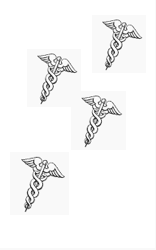By KIM BELLARD
Those of us of a certain age, or anyone who loves classic movies, remember the famous scene in “The Graduate” when Benjamin Braddock is given what is intended as a helpful clue about the future. “Plastics,” one of his father’s friends says. “There’s a great future in plastics.”
Well, we’re living in that future, and it’s not all that rosy. Plastics have, indeed, become an integral part of our world, giving billions of us products that we could never otherwise have or afford. But our future is going to increasingly be driven by an unintended consequence of the plastics revolution: microplastics.
And that’s not good.
Microplastics are what happens to plastic after it has gone through the wringer, so to speak. Plastic doesn’t typically decompose, at least not in any time frame we’re capable of grasping, but it does get broken down into finer and finer particles, until they reach microscopic levels (thus “microplastics”). We’ve known for some time that plastics were filling our landfills, getting caught in our trees and bushes, washing up on our shorelines, even collecting in huge “garbage patches” in the ocean. But it wasn’t until more recently that we’ve found that plastics’ reach is much, much broader than we realized, or could see.
The ocean full of microplastics, and fish are as well. They’re in our drinking water. Indeed, “There’s no nook or cranny on the surface of the earth that won’t have microplastics,” Professor Janice Brahney told The New York Times.
Dr. Brahney was coauthor on a recent study that found microplastics were pervasive even in supposedly pristine parts of the Western U.S. They estimated that 1,000 tons of “plastic rain” falls every year onto protected areas there; 98% of soil samples they took had microplastics. Dr. Brahney pointed out that, because the particles are both airborne and fine, “we’re breathing it, too.”
Continue reading…














